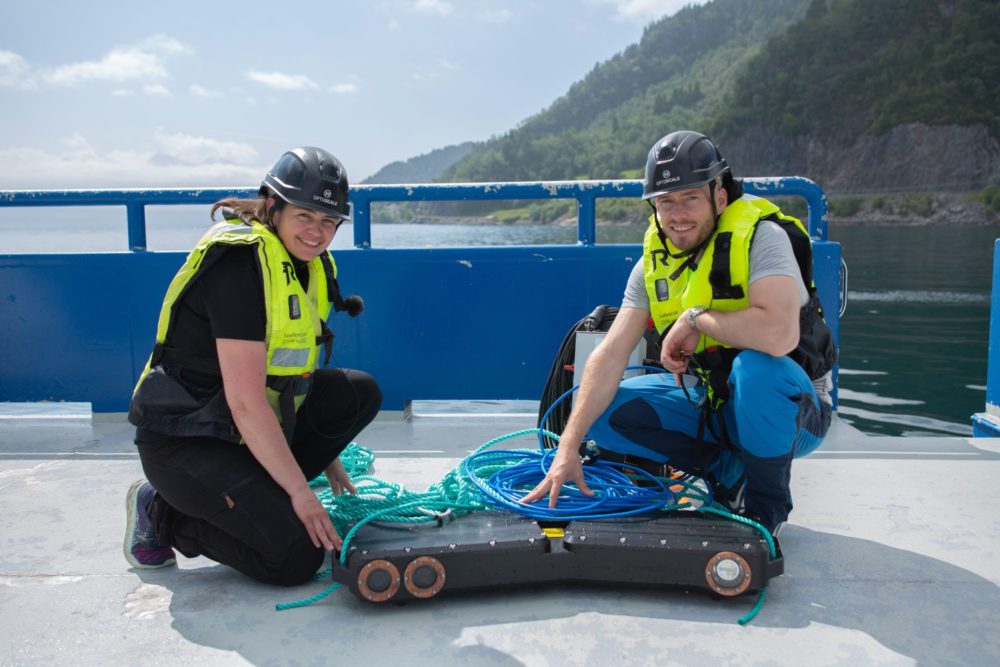OptoScale, a Norwegian startup that’s building monitoring tech for fish farms, has raised $4.1 million funding in its first venture round – six years after launching.
“We’ve been really focused on making sure this works and it’s stable, so there are no unforeseen issues down the road, before raising venture funding,” CEO Sven Jørund Kolstø tells AFN. “My take on venture is that it’s for when you’re ready to really push the throttle in fully – [when you] just need more fuel to make the rocket fly.”
Blue Ocean, a marine impact fund managed by France’s SWEN Capital Partners, led the round. Norwegian VC firm Skagerak Maturo also participated.
OptoScale — which already operates in Canada and the UK as well as its native Norway — said it will use the funding to expand to new markets, with Australia, Chile, and Iceland the priorities. It will also use some of the capital to make hires, with the aim of doubling its 20-strong workforce over the next two to three years.
Founded in 2015, the Trondheim-based startup began by offering sensor and optics technology that allows salmon farmers to accurately gauge the mass of their fish, without the need to use the more traditional — but not entirely practical — solution of weighing scales.
Since then OptoScale’s tech has evolved, integrating artificial intelligence and software to give farmers additional insights on the welfare of their stock. This includes activities such as disease detection and lice counting, which typically require farmers to take their animals out of the water for manual inspections that can further risk their health.
The startup’s units can be easily placed into fish cages by farmers and provide them with constant, real-time updates. An underwater camera in each pen and sends mass measurements “accurate within 3%,” allowing producers to assess up to 200,000 fish per day compared to the 50 to 100 usually possible, according to OptoScale.
Furthermore, this potentially helps operations to reduce overfeeding and harvest their fish at the optimum time, thereby boosting their profitability while also making them more sustainable.
Hardware-as-a-service
“Our solution is very plug-and-play,” chief technology officer Ragnhild Skjetne Hollup tells AFN.
“For one customer in Scotland, it took just 15 minutes for them to get it up and running; they brought up that one of our biggest competitors had taken three months.”
OptoScale says it “leases” its units to farms, which pay for a software subscription under what Kolstø calls a hardware-as-a-service model.
“It’s actually one of the areas where we’ve innovated most,” he says.
“This industry is very used to buying things, but we saw early on from commercial customers that they had become skeptical – they’d bought so many things in the past that [ended up] shelved because it didn’t work for them.”
“We provide customers with an up-to-date, functioning hardware unit and we update the software. The only time the customer spends on it is moving it, washing the lens or, if the unit is faulty, they put it on a pallet and we send them a new one. The customer doesn’t care how nice it is – they care about the data, so it needs to be easy to use, and it needs to survive in the ocean.”
The startup says it aims to have 2,000 units in operation with customers by 2027.
Cutting out the cloud
Another factor in OptoScale’s differentiation from competing aquaculture monitoring platforms is that it relies on edge computing — with data processing taking place within the units, rather than servers located somewhere else.
“Now, everything has gone towards the cloud. But that is quite expensive, and also you need to have a constant, strong internet connection for the things we do,” Kolstø says.
“We do all the processing on site, so we don’t need high-speed internet connections to the site.”
That could be a massive boon for fish farms located in particularly remote or inhospitable areas where internet connectivity can be poor.
Looking ahead, OptoScale will maintain the same ‘slow but steady’ approach to growth as it has for fundraising – though it’s keeping one eye on the wider opportunities for its tech.
“The goal, over a longer term, is to service all the fish-farming species that have a certain volume. We have had a lot of requests from farms in tilapia, sea bream, sea bass, and carp,” Kolstø says.
“We are quite careful by nature, and my very strong notion is we have got to get this working extremely well for salmon before branching off into new species. When we have really solidified in the salmon market, we have lots of potential clients all over the world for these other species as well.”




